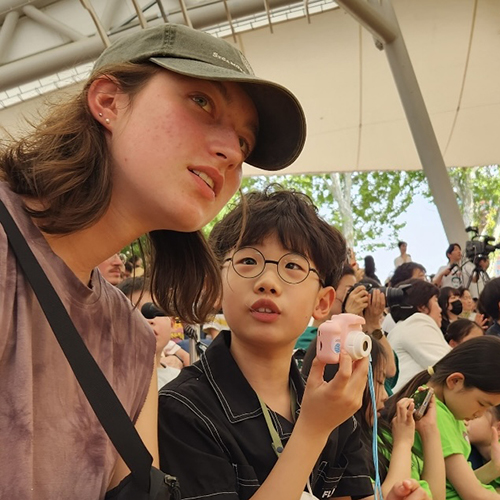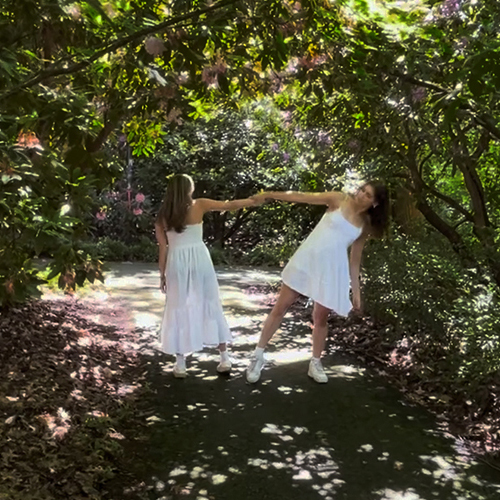Students taking Susan Gaylard’s Italian 260 course may never look at a three-piece suit the same way again. Or stilettos. Or any other article of clothing.
The course, titled ”Fashion, Nation, and Culture,” is an exploration of Italian culture from the late medieval period to the present through the study of clothing. Offered jointly with Art History and European Studies, the 120-student class includes majors in everything from design to chemical engineering to psychology.

“Most students come in thinking we’re going to study clothes,” says Gaylard, “but mostly we’re studying how people think and talk about their clothes, and what that says about their culture.”
Gaylard, assistant professor of French and Italian studies, is no fashionista. Growing up in South Africa, her daily wardrobe was a school uniform—and she liked it that way. When she moved to the U.S., she marveled at the American ritual of buying back-to-school clothes. “It got me thinking about how incredibly culturally determined our relationship with clothes can be,” says Gaylard.
That idea percolated when, as a graduate student, Gaylard served as teaching assistant in a course about Italian culture. She thought a discussion of clothing would be a novel way to engage students in larger cultural issues. This quarter, after months of research on the topic, she’s finally testing her idea.
The course begins in the mid-1300s, a time of extraordinary change in Western European clothing. At the start of the century, most people wore long, gender-neutral tunics that were loose and flowing. By mid-century, men’s hemlines rose dramatically. Both men’s and women’s clothing became more fitted and gender specific.
Not everyone was pleased with the change, as students learn in readings from the period. “People discussed it a lot at the time,” says Gaylard. “While some praised the fine fabrics and gorgeous embroideries, others vented about the sins of vanity and all the attention to men’s legs. There was also a whole discourse about the money being spent on clothes that can’t be handed down from one person to another because they are so fitted to the body.”
Three centuries later, men’s clothing became less conspicuous with the introduction of the three-piece suit, which gained popularity between the late 1600s and early 1800s. “There was a pride in modern masculine restraint,” says Gaylard. “The men still wanted to look exquisite, but they no longer had jewels sewn on their clothes. Women’s clothes, however, remained highly decorative.”

Throughout the course, Gaylard emphasizes the role of fashion in constructing national identity—a role that is particularly evident in times of political turmoil. During World War I, women’s hemlines rose along with the price of fabric, and trousers became acceptable for women working at jobs traditionally held by men. This trend was pronounced in America and Britain; in Italy there was a backlash against America’s “independent woman” and her fashion choices. But years later, following World War II, with the European fashion industry in tatters, “the American look” took on greater prominence even in Europe.
Gaylard uses a variety of resources to demonstrate the connections between fashion and culture. Among her favorites are advertisements dating back to the 1830s, selling everything from painful stilettos praised for their comfort to corsets touted as a way to “liberate yourself.” She’s sifted through hundreds of publications in UW Special Collections to cull her favorite advertisements, and has planned an assignment around them as a way to make students aware of the extensive holdings in UW Special Collections. The students will also compare what they read in the advertisements with actual 19th-and early 20th-century outfits at the Henry Gallery.
In the end, Gaylard hopes that students not only gain insight into cultural shifts through the centuries, but also take a hard look at their own relationship with fashion. “I’d like them to become more thoughtful about their experiences as consumers and less easily manipulated,” says Gaylard. “And I hope they’re able to think more carefully about assumptions they make about other people’s choices.”
More Stories

Democracy by the Numbers
Mathematics and Democracy, an undergraduate mathematics course, explores the role of math in many aspects of democracy, from elections to proportional representation.

Finding Family in Korea Through Language & Plants
Through her love of languages and plants — and some serendipity — UW junior Katie Ruesink connected with a Korean family while studying in Seoul.

Dancing Across Campus
For the dance course "Activating Space," students danced in public spaces across the University of Washington's Seattle campus this spring.